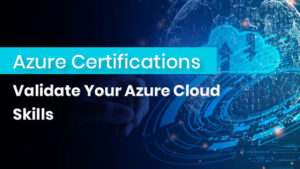
How to Harden Your Infrastructure Using CIS Benchmarks
How to Harden Your Infrastructure Using CIS Benchmarks Introduction As more organizations go faster with their digital transformation, the security and resilience of IT infrastructure
Limited-Time Offer! Get an exclusive 40% OFF on IPSpecialist Premium Monthly & Annual Plans. Use Promo Code: UPSKILLNOW at checkout.

How to Harden Your Infrastructure Using CIS Benchmarks Introduction As more organizations go faster with their digital transformation, the security and resilience of IT infrastructure

Azure Certifications – Validate Your Azure Cloud Skills Introduction Cloud computing has transformed the business landscape, providing scalability, flexibility, and affordability in a way

Top Cyber Security Trends: What Every Organization Must Know Introduction In an era marked by digital transformation, remote workforces, and rapidly evolving threat landscapes,
Table of Contents
Cloud Security Posture Management (CSPM) is a subsection of IT security tools specially intended to target cloud compliance risks and misconfiguration. In order to find enforcement gaps in security policies, CSPM continuously watches cloud infrastructure.
Multi-Cloud Cloud Security Posture Management (CSPM) refers to monitoring and ensuring the security posture of multiple cloud environments. As organizations increasingly adopt multi-cloud strategies, effective CSPM becomes critical to ensure the security of sensitive data and applications. This article covers detailed knowledge of Third-Party Tools and why third-party tools are better for Multi-Cloud CSPM.
Cloud security is a joint effort between Cloud Service Providers (CSPs) and their customers. The division of responsibilities between the two parties depends on the type of cloud service being used: Infrastructure as a Service (IaaS), Platform as a Service (PaaS), or Software as a Service (SaaS).
In general, CSPs are responsible for the security of the underlying cloud infrastructure and the physical safety of the data centers. At the same time, customers are responsible for securing the data and applications they run in the cloud.
Cloud service providers (CSPs) offer a range of security tools and services to help their customers secure their cloud environments. Here are some standard security tools provided by CSPs:
Identity and Access Management (IAM): IAM tools manage user access to cloud resources. CSPs offer IAM tools to enable customers to control who can access their cloud resources and what they can do with them.
Encryption: CSPs offer encryption tools to protect data in transit and at rest. Encryption tools include Secure Socket Layer (SSL) and Transport Layer Security (TLS) for encrypting data in transit and storage encryption for encrypting data at rest.
Compliance: CSPs provide compliance tools to help customers meet regulatory requirements. These tools include compliance frameworks such as HIPAA and PCI DSS, compliance reports, and third-party certifications.
Logging and Monitoring: CSPs offer logging and monitoring tools to track user activity, detect anomalies, and identify security incidents. These tools include log management and analytics, Security Information and Event Management (SIEM), and threat detection and response services.
Vulnerability Management: CSPs offer tools to help customers identify and remediate vulnerabilities in their cloud environments. These tools include vulnerability scanning, patch management, and configuration management.
It is important to note that while CSPs provide these security tools, customers are responsible for configuring and using them to secure their cloud environments. Customers must understand their shared responsibility with CSPs regarding cloud security and take steps to ensure their cloud resources.
Third-party cloud security refers to a security solution created by a company other than a cloud service provider.
Alternatively, third-party cloud security tools come from organizations, platforms, or open-source initiatives that are not directly affiliated with, controlled by, or operated by AWS, Azure, GCP, or other public clouds. These cloud environments usually support third-party cloud security tools, but users must explicitly deploy the tools since they are not included by default.
Third-party tools are software applications developed by vendors other than the Cloud Service Provider (CSP) that offer additional security capabilities beyond what the CSP provides. These tools can help organizations address gaps in their cloud security posture and provide extra visibility, automation, and customization.
The following are some examples of third-party security tools for cloud environments:
Cloud Security Posture Management (CSPM) Tools: CSPM tools help organizations monitor and manage their cloud security posture across multiple cloud providers. These tools provide centralized visibility into security configurations, compliance, and risk across cloud environments and offer automation capabilities to help organizations remediate security issues.
Cloud Access Security Brokers (CASBs): CASBs provide visibility and control over cloud applications used by employees, enabling organizations to enforce security policies and protect sensitive data in cloud environments. These tools help organizations secure cloud applications and implement data access, sharing, and storage policies.
Cloud Workload Protection Platforms (CWPPs): CWPPs help organizations secure their cloud workloads and prevent security incidents such as malware, ransomware, and data breaches. These tools provide continuous monitoring and real-time threat detection to protect cloud workloads from cyber attacks.
Cloud Data Loss Prevention (DLP) Tools: Cloud DLP tools help organizations protect sensitive data in cloud environments by monitoring and preventing data exfiltration. These tools can help organizations detect and prevent unauthorized access to sensitive data and enforce policies around data usage and sharing.
Cloud Encryption and Key Management Tools: Cloud encryption and critical management tools provide additional protection for sensitive data in cloud environments. These tools enable organizations to encrypt data in transit and at rest and manage encryption keys to ensure data security and privacy.
Third-party tools are often better for multi-cloud CSPM (Cloud Security Posture Management) for several reasons:
Multi-Cloud Support: Third-party CSPM tools are designed to support multiple cloud providers, allowing organizations to monitor and manage their security posture in various cloud environments using a single platform. This eliminates the need for organizations to use separate tools for each cloud provider, reducing complexity and improving efficiency.
Centralized Visibility: Third-party CSPM tools provide centralized visibility into security configurations, compliance, and risk across multiple cloud providers. This enables organizations to identify security risks and vulnerabilities and respond to incidents in real-time, regardless of where they occur.
Customization: Third-party CSPM tools offer greater customization than CSP’s native tools. This allows organizations to tailor security policies and controls to meet their needs and address unique security requirements across cloud providers.
Automation: Third-party CSPM tools offer automation capabilities that can help organizations streamline security processes and reduce the risk of human error. This can particularly benefit organizations with limited resources or in-house security expertise.
Integration: Third-party CSPM tools can be integrated with other security tools and systems, allowing organizations to leverage their existing investments and maximize the value of their security technologies.
Overall, third-party CSPM tools offer a more comprehensive and efficient approach to multi-cloud security management than relying solely on the CSP’s native tools. By leveraging third-party tools, organizations can enhance their security posture, reduce complexity, and improve overall efficiency in managing security across multiple cloud providers.
Using third-party tools for multi-cloud CSPM (Cloud Security Posture Management) can offer several advantages over relying solely on native tools provided by cloud service providers.
Third-party tools can provide centralized visibility and management of security across multiple cloud providers, offer greater customization, automation, and integration capabilities, provide real-time monitoring and threat detection capabilities, and help organizations meet complex compliance requirements.
The need for comprehensive and efficient security management across multiple cloud providers will only grow as cloud environments become more complex and the threat landscape evolves. Third-party tools can help organizations stay ahead of the curve by offering the latest security innovations and best practices and providing a more comprehensive and efficient approach to multi-cloud security management.
While some initial costs may be associated with implementing third-party CSPM tools, the long-term benefits in terms of enhanced security posture, improved compliance, and reduced complexity will likely outweigh these costs. Therefore, organizations looking to manage security across multiple cloud providers should consider leveraging third-party CSPM tools as an essential component of their cloud security strategy.
Kickstart Your Career in Cloud Computing Today!
Explore Now© 2025 All rights reserved | Privacy Policy | Terms and Conditions | Sitemap | Cookie Policy




